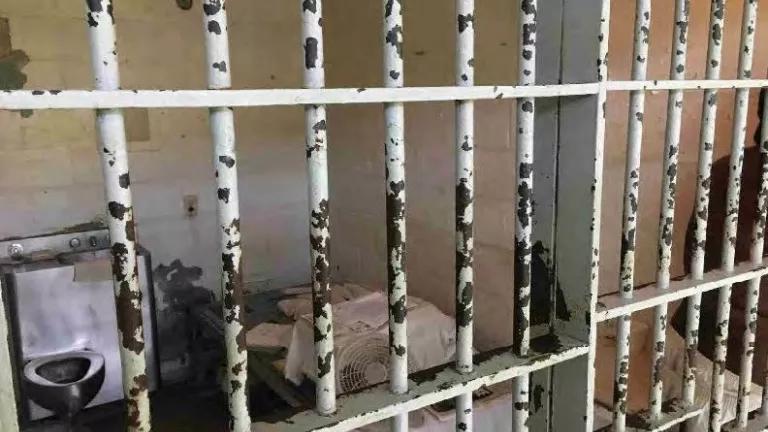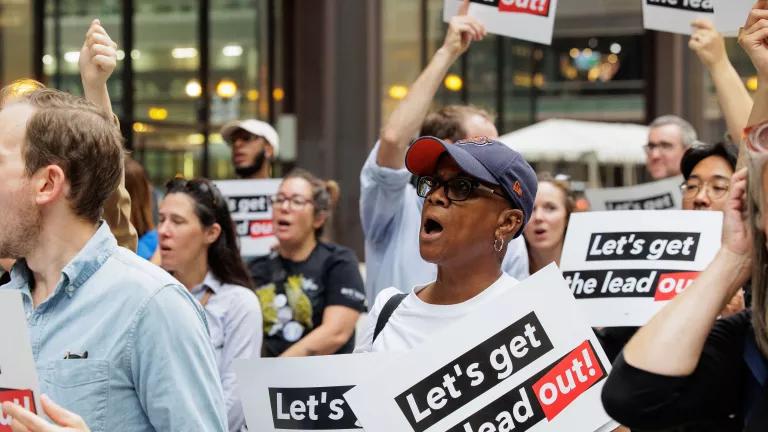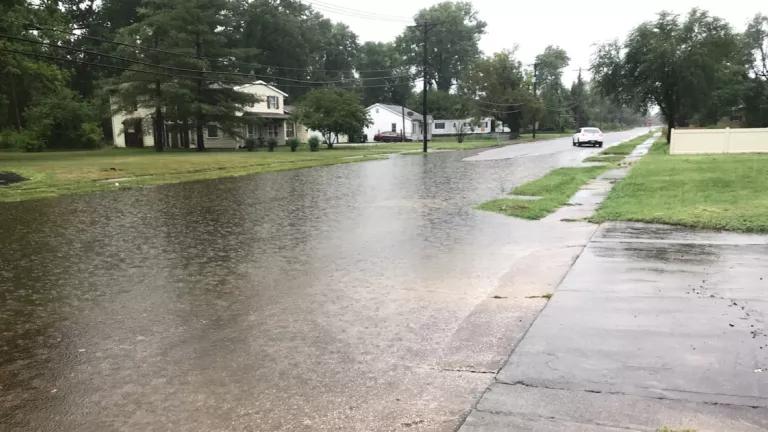Our Water Infrastructure: Time to “Build Back Better”
We have an opportunity right now to generate momentum for bold drinking water policies across the nation.

High lead levels found in the Cannon House Office Building forced Capitol staff and visitors to use alternate sources of drinking water.
We are at a pivotal time to “build back better” and ensure safe and affordable water for everyone in our country. Two recent polls show strong support for removing lead pipes and doubling down on our investments in water infrastructure. We have an opportunity right now to capitalize on this interest and generate momentum for bold drinking water policies across the nation.
In many communities—especially communities of color—lead pipes are a primary vehicle for delivering drinking water. Lead is a dangerous neurotoxin that is especially harmful to children. The experts—including the Centers for Disease Control and Prevention (CDC), the American Academy of Pediatrics and the World Health Organization—agree that there is no safe level of lead exposure. According to recent polling from Black Millennials for Flint, BlueGreen Alliance, and Environmental Defense Fund, 80% of voters support funding the replacement of lead pipes in water systems in communities across the U.S.
Here in Illinois, the second city leads the nation in having the most lead service lines. Alarmingly, the Chicago Tribune recently found that more than 8 of every 10 Illinoisans live in a community where lead was found in the tap water of at least one home during the past six years. The only way to address this dangerous problem is to get all the lead pipes out of the ground in Illinois and across the country.
Drinking water emergencies like in Flint, MI, and Newark, NJ, are not unique and they underscore the need to invest in our water infrastructure now. The public agrees. A recent Water HUB poll found that 93% of voters think that fixing outdated and unsafe drinking water systems should be a priority. In addition, 78% of voters across the country support increasing federal spending on water infrastructure.
For too many years we have neglected our drinking water infrastructure. Unmaintained systems across the country have resulted in an increase in the cost of water services. As a result, people don’t have access to drinking water because they can no longer afford their water bills. The Water HUB poll also indicates that in the past year, 17% of voters had trouble paying their water bill. In addition, about 1 in 5 voters experienced a water shutoff (22%) and/or threat of disconnection. We can’t pretend there is no problem with our water infrastructure. “Out of sight, out of mind” is not a sustainable policy when it comes to water infrastructure. As we are now seeing, communities we will be forced to face—and fix—the problem.
The pandemic exacerbated drinking water safety and security for many people across the country—particularly in communities of color. For many low-income households, especially people of color, unaffordable water costs and the threat of shutoffs are not new. But for these same people, the gap between their bills and what they can afford grew significantly during the pandemic. More people than ever are facing unaffordable water bills. Considering that health experts are continually pushing thorough hand washing to combat the spread of Coronavirus, these ballooning water bills are unacceptable. The pandemic is the latest illustration of how the lack of access to water jeopardizes people’s health and lives.
When Flint residents saw that the water coming out of the pipes was dark in color, tasted foul, and caused skin rashes and hair loss, they had to use bottled water to cook and bathe their children. We should never normalize depending on bottled water for basic needs. The Flint water crisis demonstrates how the lack of investment in community water infrastructure—coupled with the short-sighted decisions of an emergency manager to save a few dollars—results in an expensive and irreparable human toll.
Public opinion is demonstrating widespread support for making a real investment in our water infrastructure now. Congress is poised to consider what could be a once-in-a-generation infrastructure package that could address a whole host of drinking water issues, including lead service lines. Not only is safe, sufficient, and affordable drinking water at stake—it could deliver significant economic growth, spur job creation, and support climate resilience, too.
Clean, safe and affordable drinking water is not a partisan issue, it is common sense. Efforts to “build back better” must include investing in our nation’s water infrastructure—for the sake our communities and our country.




